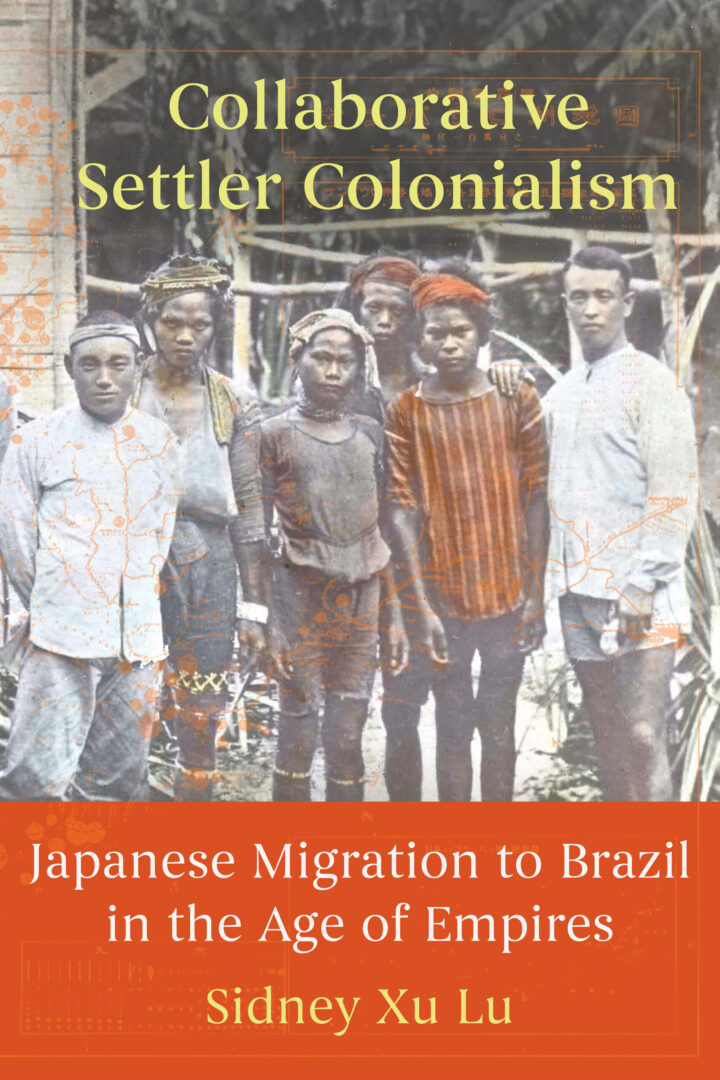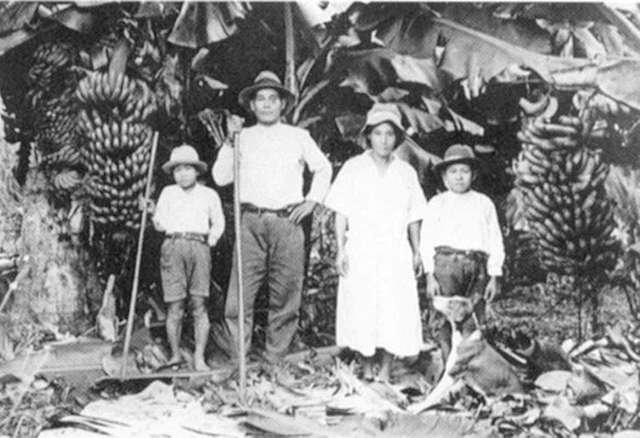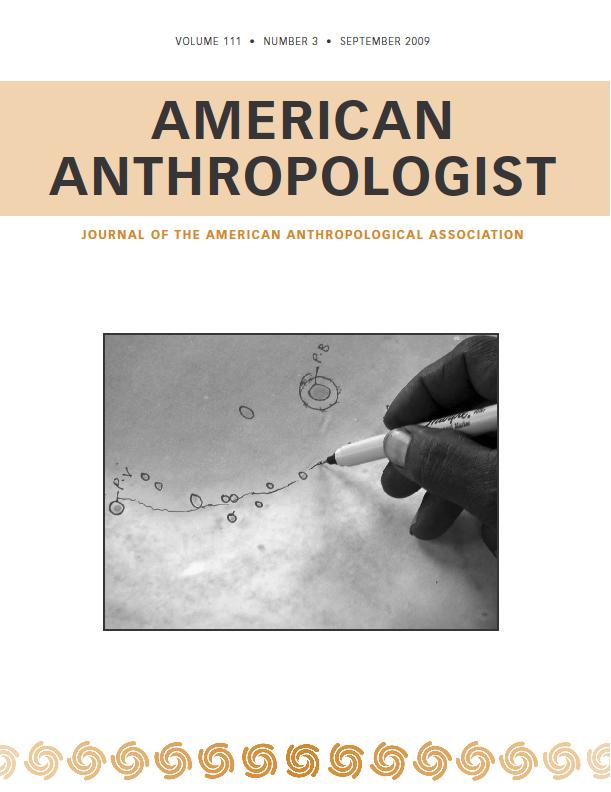Sidney Xu Lu. 2025. Collaborative Settler Colonialism: Japanese Migration to Brazil in the Age of Empires. Oakland: University of California Press.

Sidney Xu Lu’s monograph Collaborative Settler Colonialism: Japanese Migration to Brazil in the Age of Empires offers a deeply engaging historical analysis of nation and empire-building in the East Asian and South American contexts, looking specifically at Brazil and Japan and the convergence of their settler colonial project in the period between the end of the 19th century and the long post-World War II era. In doing so, the book detaches itself from past anthropological studies on Japanese settlements in Brazil, presenting instead a macro-perspective on the international relations and the structural developments that shaped competing, and at times complementary, ideologies of race, consolidating the foundation of their colonial rule.
Collaborative Settler Colonialism undoubtedly enriches the scholarship on colonial formations in non-Western contexts by providing a well-crafted historiography of the collaborative enterprise between Brazil and the Japanese Empire, abundant with historical documents and a variety of primary sources. While this is a welcome addition to the field, I believe that the main contribution of Lu’s analysis lies in the re-evaluation of the underpinning characteristics of non-Western settler colonial establishments, which are closely examined through the concept of “migration state”. According to the author, migration state “means a government that has devoted itself to the promotion and management of migration through diplomacy, laws, social policies, and financial aid” (3). The mutual support between the Japanese Empire, as an emigration-focused state, and Brazil, as an immigration-centred state, turns the act of migration into an act of collaborative colonisation, dismantling the power and hierarchical structures that usually see the dichotomy between the West versus the Rest. By focusing on Japan and Brazil, two non-Western countries, Lu’s examination moves to an underestimated aspect of imperialism, namely the collaborations and connections among settler colonial regimes that do not belong to the West, broadly defined.
The “collaborative settler colonialism” that gives Lu’s monograph its title is yet another, different, example of how colonial enterprises can work together, mutually reinforcing each other and the socio-political ideologies that function as their theoretical foundations.
Arguably, the entanglement of different colonialisms, even in the East Asian context, is not uncharted territory in scholarly debates. Most famously, the dual (semi-)colonial structure enabled by mainland Japan and the United States military in Okinawa has been discussed as an example of “dual empire” (Ginoza 2016) or “transpacific colonialism”, where Okinawa is not “simply the crossroads of a double colonialism, where the colonialism of one state is simply layered on top of the colonialism of another, while both maintain their independence,” but a “mutually dependent relationship of two colonialisms that work together with synergistic effects” (Shimabuku 2012, 134). The “collaborative settler colonialism” that gives Lu’s monograph its title is yet another, different, example of how colonial enterprises can work together, mutually reinforcing each other and the socio-political ideologies that function as their theoretical foundations. Specifically, it expands the network of imperialist legacies to include overlooked (hi)stories and complicate national narratives, blurring the distinct division between aggressors and victims that is still today often employed in rhetorical arguments as a means for historical revisionism (see, for example, the victimisation of Japan in the aftermath of the atomic bombing of Hiroshima and Nagasaki).
Collaborative Settler Colonialism offers another major theoretical contribution to the discussion about colonialism in the Japanese context. As the author states, “[a] focus on Japanese emigration to Brazil allows” for a re-evaluation of the “significance of Japanese expansion beyond the relationship between the imperial metropole and the colonies” (17). By doing so, Lu proposes another chronology of Japanese settler colonialism that departs from the colonial migration to Hokkaido at the beginning of the Meiji era (1869 – 1912) and concludes with the celebration of the seventieth anniversary of Japanese migration to Brazil in 1978 in São Paulo. This makes the reader question what “colonialism” is and how many different articulations of it can (co-)exist, ultimately broadening the definition of the term by undoing the geographical and chronological tenets that often limit its usage to specific points in space and time. Lu further argues that the end of his chronological account does not mean the end of Japanese settler colonialism as a “structure”, which instead “entered a new phase with new connections between Japan and Japanese overseas communities” (17). This speaks to me of the importance of maintaining “colonialism” as a fundamentally transformative process where power structures are always renegotiated and remodelled according to the needs and possibilities of the political actors involved, and whose narratives can be invisibilised, ignored, or disregarded depending on the convenience of the (post-)colonial authority in charge.
This chapter aptly emphasises the convergence of Meiji Japan and post-independence Brazil as two settler colonial agents whose territorial expansion was based on emigration, in the case of Japan, and immigration, in the case of Brazil, processes inspired by the American domestic expansion and conquest of Indigenous lands.
Collaborative Settler Colonialism is divided into four parts, each including two chapters. Part I investigates the initial period, the origin, and the motivations of Japan and Brazil’s establishment of a migration-centred network that eventually developed into a settler colonial venture. Chapter 1 uses as a starting point 1869, the beginning of Meiji Japan as the creation of a new Japanese nation-state following the model of Western powers, and the military coup that twenty years later, in 1889, will lead to the establishment of the United States of Brazil, also known as the First Republic. In this chapter, Lu argues that settler colonialism emerged in Japan and Brazil as a reaction to American westward migration, making Japan’s empire builders see “migration as a primary means of colonial expansion” (27). Likewise, Brazil followed the same illustrative example of the logic of demography, race, and capitalism inherent to American westward expansion as a critical step in the processes of nation-making and empire-building (30). This chapter aptly emphasises the convergence of Meiji Japan and post-independence Brazil as two settler colonial agents whose territorial expansion was based on emigration, in the case of Japan, and immigration, in the case of Brazil, processes inspired by the American domestic expansion and conquest of Indigenous lands. Chapter 2 builds on the previous chapter to demonstrate how Anglo-American settler colonialism was a source of inspiration for the Japanese Empire and Brazil not only for its actual policies of land conquest and repopulation, but also for the ideological backbone functioning as a justification for the making of colonial powerhouses. Lu notes how the St. Louis World’s Fair in 1904 institutionalised and made evident the close connection between progress and Indigenous subjugation (42). The chapter further discusses how the circulation of influential ideas regarding race and land exploitation (the rise of Japanese agrarianism as a way to transform Indigenous lands into territories of the Japanese Empire is a particularly striking example of this), as well as economic opportunities and changes in migration patterns, led to the sailing of the Kasato Maru, the first ship bringing soon-to-be Japanese colonial settlers to Brazil.
Part II includes an examination of the emergence and development of Japanese settler villages in southeastern Brazil vis-à-vis the Japanese colonial expansion in Asia during the critical period between the 1910s and the 1920s, allowing Lu to draw parallels among competing and synergistic conceptualisations of race and modernisation. Chapter 3 offers a detailed account of the origin, development, and expansion of Japanese farming villages through the end of World War I by analysing domestic Brazilian factors such as the new policies of land distribution in the state of São Paulo and the construction of a new railway, and the emergence of the Japanese Empire as a regional hegemonic power following its war victories at the beginning of the 20th century. It further highlights how the establishment of Japanese settler villages in Brazil was also in reaction to the anti-Japanese sentiment in the United States, leading Japan to seek alternative migration destinations and convincing the Japanese government that “agricultural settlement and land acquisition was a more desirable migration model than that of contract labor” (80), the latter being a model particularly popular for Japanese workers in the United States. In Chapter 4, Lu outlines how early 20th-century Japan established migration routes and political institutions that would facilitate the relocation of entire Japanese communities to Brazil and other conquered areas in Asia. In particular, it highlights how the success of Brazil-bound emigration through government-sponsored institutions laid the structural foundation for the Japanese migration state to mobilise and control emigration as a critical preparation for the Japanese Empire’s expansion in Asia during the Second World War.
Part III deepens the analysis of the communal lives and politics involved in the formation and maintenance of Japanese Brazilian villages from the 1930s to the end of World War II. This part draws from Brazilian domestic political debates within the Japanese settler villages and the central government to understand how the positionality of Japanese immigrants was shaped by international relations, the Japanese Empire’s colonial enterprise, and the way the Japanese community was framed as a race and socio-political entity by the Brazilian government. Chapter 5 explores the processes that would allow Japanese Brazilian opinion leaders to shape and maintain a settler colonial identity among ordinary Japanese farmers, promoting a sense of collective identity that would strengthen intra-community relationships and their position as rightful landowners in the state of São Paulo. Lu enriches his analysis by proposing examples from magazines, opinion pieces, and historical documents discussing the ambiguity of Japanese colonial settlers’ identity as both Japanese subjects and inhabitants of Brazil. This is further discussed in Chapter 6, where issues of assimilation and identity crisis are debated as Japanese communities in Brazil take deeper roots and are forced to decide whether to assimilate into the rest of the Brazilian population through racial mixing or return to Japan to support the military enterprise headed to World War II.
Part IV illuminates the continuity of Japan’s collaborative settler colonialism before and after World War II, examining a period of the Japanese colonial venture that is often overlooked or not regarded as such, and which instead contributed to the popularisation of the discourse known as Nihonjinron (‘theory on the Japaneseness’) that still today informs the stance and political actions of several conservative factions in Japan. Chapter 7 discusses how the colonisation of the Brazilian Amazon is connected, structurally and ideologically, with Japanese colonial expansion in the Asia-Pacific region. It further illuminates the nature of collaborative settler colonialism in influencing international relationships, migration patterns, and commercial routes centred in the Brazilian Amazon involving the Brazilian government, the Japanese Empire, and the United States. Chapter 8 finally uncovers the hidden Japanese colonial legacy in the aftermath of World War II, explaining how first-generation Japanese Brazilian elites rebuilt their cultural ties with Japan immediately after the war to rebrand the image of Japanese settlers in Brazil, at the same time reshaping Japan mainlanders’ postwar national and cultural identity.
Japanese and Brazilian collaborative settler colonialism replicated the logic of white racism that justified Western imperialism in the first place.
Ultimately, in its renewed understanding of the history of Japanese settler colonialism, Lu’s monograph reflects on the political significance of Japanese settler identity and the socio-historical implications for its shaping of convergent transnational colonial structures. By doing so, Lu’s study does not conceal the history of the victims of such structures, revising the term “indigenes” in the context of Latin America and showing how “[c]enturies-long practices of racial mixing among white settlers, African slaves, and Indigenous peoples on the continent have complicated the conventional narratives of settler colonialism in the British and American contexts, which were centered on the binary of white settlers versus Indigenous peoples” (14). Above all, as mentioned in the opening to this review, Collaborative Settler Colonialism shows how colonialism escapes simplistic Manichean constructions based on a “West versus non-West” discourse. Japanese and Brazilian collaborative settler colonialism replicated the logic of white racism that justified Western imperialism in the first place. This is, to me, the most significant reflection of Lu’s study: namely, that the reverberations of colonial power structures transform in unexpected ways the experiences and agency of the political actors involved in the process, which invites us to re-examine binaries of settler/native and white/Indigenous in the broader literature of (post-)colonial studies.
Featured Image: Japanese immigrant family in Brazil 02. Source: Museu Histórico da Imigração Japonesa.
References
Ginoza, Ayano. “R&R at the intersection of US and Japanese dual empire: Okinawan women and decolonizing militarized heterosexuality.” American Quarterly 68, no. 3 (2016): 583-591.
Shimabuku, Annmaria. “Transpacific colonialism: An intimate view of transnational activism in Okinawa.” CR: The New Centennial Review 12, no. 1 (2012): 131-158.


